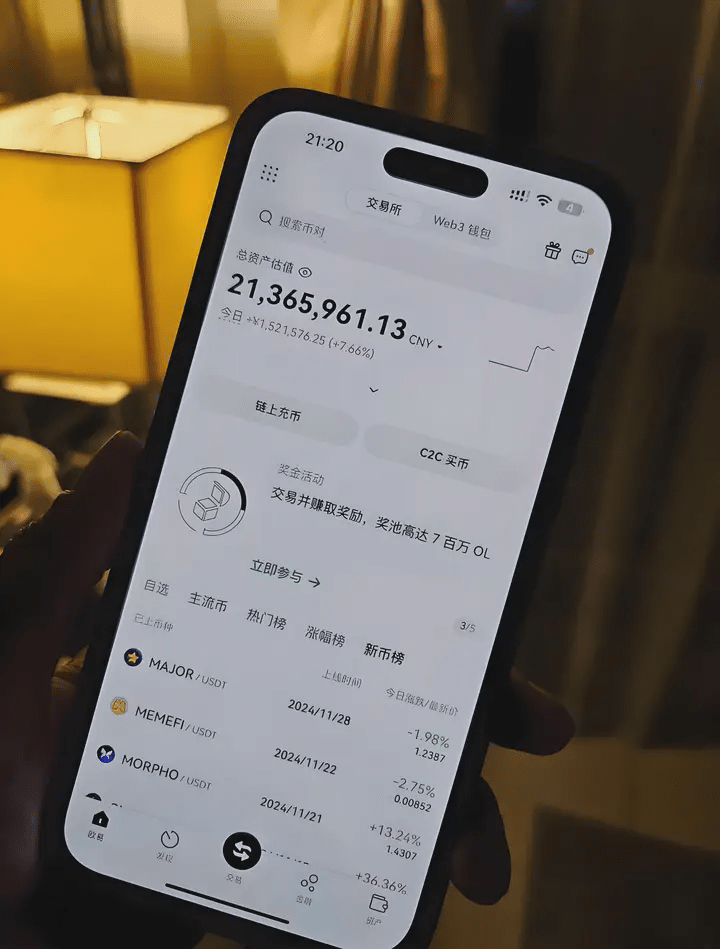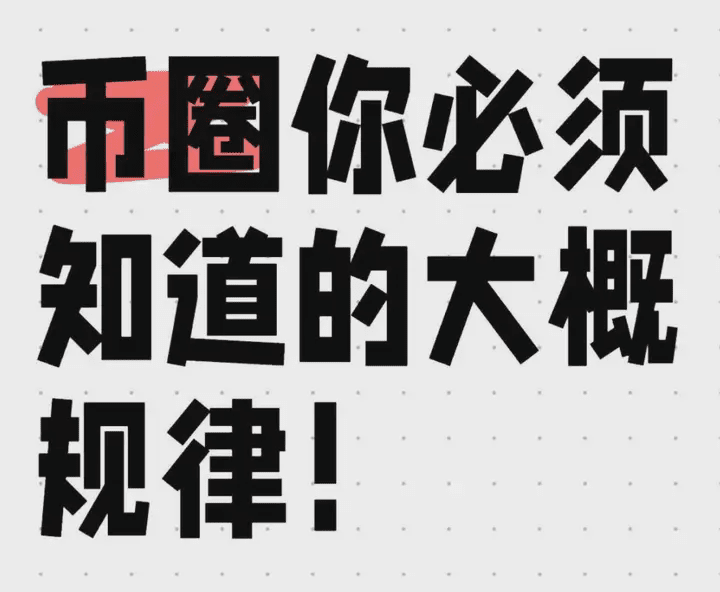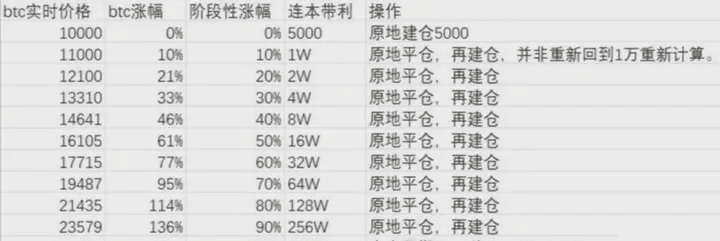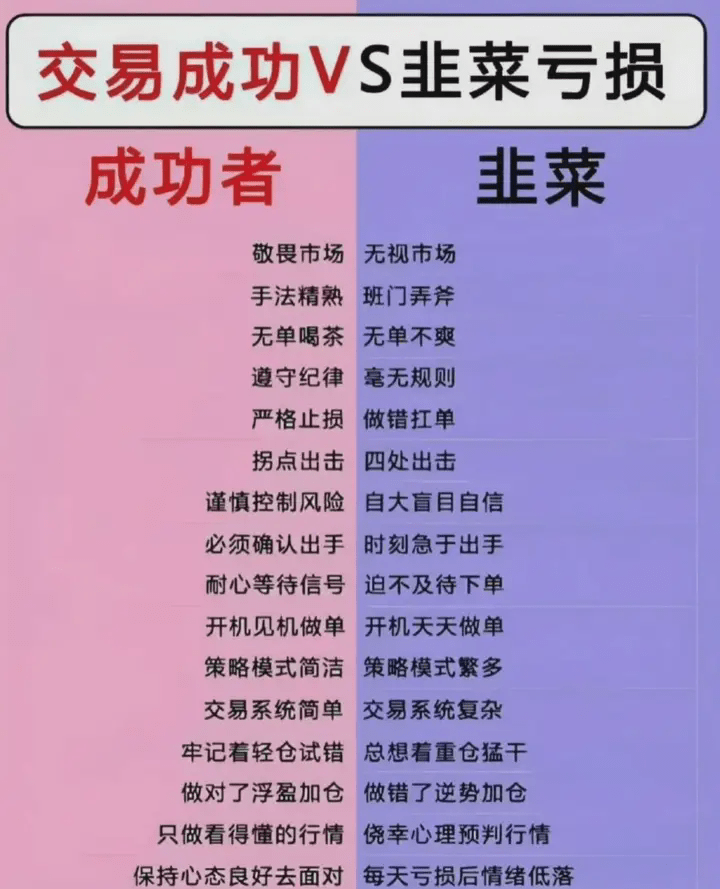If you are currently at a loss and want to make trading your second career in the future, please read this carefully; there will definitely be gains, I recommend saving it!

Full margin? Isolated margin? If you get liquidated, it’s not just bad luck; you haven’t even understood this!
When trading contracts, have you ever been confused by 'full margin' and 'isolated margin'?
Don't underestimate these two words; one decides whether you can leave the market alive!
Today, let’s skip the esoteric and use the most straightforward way to fully understand their differences. The key is how to choose wisely to survive longer and earn steadily!
Full margin model: win and eat meat, lose and eat soil.
Understanding: all the money in your account is the 'sacrificial offering' for this trade.
For instance, if you have 1000U in your account, you only used 200U to open a position, and selected 'full margin'.
With large market fluctuations, if this trade loses more than 200U, the system will automatically call your remaining 800U to continue losing until you are beyond recovery.
This is why many people say: 'One mistake, back to square one.' Full margin liquidation is a disaster of 'losing everything'.
Isolated margin mode: control risk, starting from a single position.
Understanding: each trade is an 'island', losses stop at the current trade and do not affect the overall situation.
Account 1000U, using only 200U for isolated margin.
Once this loss is done, it's done; the remaining 800U remains unchanged, and you still have capital to turn the situation around.
Isolated margin is the 'risk management weapon' most loved by professional traders. Especially suitable for beginners, it avoids being 'jointly liquidated'.
Never step into these pitfalls:
If you haven't selected a model before opening a position, default to 'full margin', directly leading to recklessness;
If bullish, go all in with 10x leverage; take profit if it rises 0.5%, liquidate if it drops 3%;
Using 'full margin + high leverage' to hold positions, sorry, you're not a professional player, you're just a gambler.
Remember these two summary sentences:
Full margin: amplifies both profits and disasters; one mistake leads to losing everything.
Isolated margin: It diversifies risk, protects the principal, and gives you a second or even tenth chance.
The crypto space is not a casino; it's a battlefield!
To survive and earn money before a bull market, don’t mess up the basics of 'full margin or isolated margin'!
If you happen to see it, you all become rich!! Can you still make big money in the crypto space? The answer is: yes, the opportunity is in this wave. Poor people have a chance to turn their fortunes around, while rich people can jump tiers quickly.
In practical trading, how to quickly judge the trend?
Simple and practical techniques are as follows:
First, look at the big direction; open the K-line chart and adjust to a 1-hour period, focusing on the moving averages. If five moving averages are all pointed up and the price is consistently above them, with pullbacks not breaching the lowest one, this indicates an uptrend.
Conversely, when all the moving averages are sloping down, and the price is always hovering below the moving averages, with rebounds not exceeding the highest one, that is a downtrend. If the moving averages are tangled, and the price jumps up and down without order, classify it as a consolidation; do not touch this.
Search for details, switch to a 15-minute period. In an uptrend, every pullback to near previous lows rebounds, with each low being higher than the last, which is healthy; wait for a pullback to support levels to enter. In a downtrend, every rebound to previous highs turns back, with each high being lower than the last, and you can short at resistance levels.
A little trick: watch the trading volume. Increasing volume during rises and decreasing during pullbacks indicates solid buying pressure and stable trends; conversely, increasing volume during declines and decreasing during rebounds indicates dominant selling pressure, making it hard to change trends. If volume fluctuates wildly, be cautious.
Lastly, remember that trends aren't that complex; don’t always doubt 'is it about to reverse'. As long as the long-term moving averages are orderly and the price hasn’t broken key levels, don’t guess tops and bottoms blindly.

With 5000 principal and 10x leverage, a wave of 100% increase leads to a profit of 5 million, which is rolling over.
Rolling over is a high-return operation, but it also carries extremely high risks; it must be approached with caution. The combination of rolling over (exponential growth) + compound interest model is the high cost-performance strategy.
Note that rolling over is exponential growth, while compound interest is a special case of exponential growth. This means all compound interest is exponential growth, but not all exponential growth is compound interest. Spot trading is a compound interest model, while futures are more like a linear growth model. In summary, effective utilization (unrealized profit) is the core of rolling over and compound interest!
Floating profit addition is not a rollover. Because the current definitions and methods of rollovers in the market are all directly copied from the views of Feizhai, Bitcoin King, and Tony, it is still not easy to understand for beginners without much investment experience. This article aims to explain it in a straightforward and crude manner.
Assuming BTC is currently priced at 10000, and I build a position of 5000 with 10x leverage. At this point, if BTC rises to 11000, a 10% increase means you make 5000. OK, the next operation is very important.
1. The method of adding positions with floating profits is to add another 5000, then when BTC rises to 12000, it rises another 10%, and your total principal plus interest is 25000. (Principal two 5000 + profit three 5000)
2. The practice of rolling over is to close previous positions, including principal and interest, of 10,000, then establish a new position. Later, when BTC rises to 12,000, the same increase of 10% means your total principal plus interest is 20,000.
Looking at it this way, doesn’t it seem like there’s no difference? But as long as you keep cycling, when BTC rises to 20,000, the increase is 100%. With floating profit addition, the total principal plus interest is 325,000 (including 50,000 principal). Rolling over the total principal plus interest is 5,120,000 (including 5,000 principal).
Why is the difference so large? Next, let’s analyze it together.
What is a complete position-building cycle?
Build position → floating profit → floating profit → exit position.
What is a complete floating profit addition cycle?
Build position → floating profit → add position → floating profit → exit position.
What is a complete rollover cycle?
Build position → floating profit → close position and rebuild → floating profit → exit position
OK, here are two more concepts explained in a straightforward way. One is linear growth, which is a steady increase of 10%, 10%, 10%. The other is exponential growth, which rises by 10%, 20%, 40%, 80%. Linear growth is like pressing the gas pedal while driving, steadily accelerating from 10 mph to 20 mph to 80 mph. Exponential growth, however, is akin to technological advancement, where growth is multiplied, starting slowly and speeding up over time. To put it in a less rigorous example for understanding, it can be proven with solid evidence that humans fully mastered fire 400,000 years ago, electricity 200 years ago, cars about 100 years ago, the internet 55 years ago, and mobile internet 30 years ago. This means that human technology rapidly advanced after mastering electricity. Comparing that 400,000 years to this is like a joke. I digress, back to the point.
Let's draw a parallel here:
Ordinary position building is linear growth; strictly speaking, contracts are not counted as linear, but let’s compare it that way for easier understanding.
Floating profit addition is the basis of linear growth plus additional positions.
Rolling over is exponential growth multiplied.
Here’s a manually calculated chart to visually show it. The circled 5000 represents the additional principal from floating profit additions.
Taking a full 10x leverage as an example

1. Preliminary preparation details
- Asset selection: Choose cryptocurrencies with high liquidity and active short-term volatility (like mainstream coins or popular altcoins) to avoid excessive slippage due to insufficient trading depth.
- Leverage setting: Choose based on your own risk tolerance. Beginners are advised to start with lower multiples (such as 2-5x), and experienced traders should also keep it within 20x to avoid sudden liquidation due to high leverage (above 50x).
- Time period selection: Focus more on short-term K-line (like 1-minute, 5-minute, 15-minute), matching high-frequency trading rhythms, while also referencing longer periods like hourly to judge the larger direction, avoiding counter-trend operations.
2. Trade execution details
- Timing to open positions: Combine technical indicators (like short-term moving average crossovers, MACD golden/dead crosses, RSI overbought/oversold) to capture entry signals. For example: open long when a 15-minute K-line shows bullish divergence and RSI is below 30, and open short when bearish divergence and RSI is above 70.
- Position duration: A single position usually does not exceed a few hours, or even a few minutes, following the principle of 'taking profits when it's good'. Close the position when profits reach expectations (like 1%-3%), avoiding greed and attachment.
- Fund rolling: Immediately use principal + profit to invest in the next trade after closing, maintaining continuous capital operation, but reserve 10%-20% as a backup for unexpected market conditions or stop-losses.
3. Risk control details
- Setting stop-loss and take-profit: Each order must forcibly set a stop-loss (like automatically closing if losing 2%), and take-profit can be staged (like closing half at 1% profit, and watching the trend for the remainder), eliminating hesitation in manual closing.
- Position management: Do not invest more than 10%-15% of total capital in a single trade to avoid heavy positions in a single direction, preventing excessive losses during trend reversals.
- Emotion management: Pause operations during consecutive profits or losses to avoid disrupting rhythm due to greed (increasing leverage) or impatience (frequent openings). Set a daily maximum loss limit (like 5% of total capital) and stop trading if reached.
4. Practical notes
- Avoid extreme market conditions (like major positive/negative news releases), as fluctuations are severe, slippage risks are high, and stop-losses are easily triggered.
- Prioritize selecting trading platforms with good depth to ensure buy/sell orders can be executed quickly, reducing losses from delays.
- Beginners are advised to practice on a demo account first, familiarizing themselves with high-frequency trading rhythm before trading live to avoid bearing high risks directly.
In summary, the core of rollover operations is 'high-frequency turnover + strict risk control', every step must revolve around 'quickly profiting and controlling losses', which requires extremely high discipline and market sensitivity; be cautious when attempting.

My trading method is very simple and practical. After three liquidations, I was left with 1000U, and in just half a year, I traded it to seven figures, only doing small rolling operations, entering the market only when I saw a good opportunity, and taking breaks during poor timing, spending more time fishing and exercising. Starting with 30,000, I now have nearly 10 million assets, relying on this 'small step rolling operations'. Once I stabilized my profits, I realized it was like my 'exclusive recipe'; applying it always brings surprises!
1. The core of small step rolling operations: first learn 'not to lose', then talk about 'earning more'.
Many people think that rolling over means 'adding positions when in profit', but the first step is 'learning to hit the brakes'. I must do three things before opening a position; if I miss one, I won’t act:
Set stop-loss lines based on volatility and pre-set them to trigger automatically.
It's not about setting 3% or 5% on a whim, but calculating based on 'recent volatility of the asset × 0.7'. For example, if ETH has fluctuated 4% in the last 7 days, and the current price is 3000 dollars, set the stop-loss at 3000 × (1 - 4% × 0.7) = 2916 dollars, pre-emptively set the stop-loss order to close automatically when it hits, and never hold the position.
Last November, when ETH plummeted, I avoided three liquidations with this trick. Many brothers missed their manual stop-losses out of hesitation, watching their accounts go to zero.
Dare to be small in the initial position to last longer.
Starting with 3000U, I only placed 450U (15% of the principal) in each trade, no matter how certain the market is, I never broke this rule. Once BTC broke 40,000 dollars, everyone in the group shouted 'go all in', but I only added 300U of profit, and as a result, it pulled back 8% that night, and all those who went all in got liquidated, while I still made 500U.
Remember: the difference in position sizes isn’t just profit disparity, it’s a matter of life and death.
Withdraw profits first and play with the market's money.
This is the most counterintuitive but most useful trick: withdraw part of the principal every time you earn 5%. For example, if I have 3000U and earn 150U, I immediately withdraw 100U into a stablecoin, and the remaining 50U continues to roll. Six months later, I had already withdrawn 30,000U of my principal, and the rest is all profit, making my mindset as stable as a rock.
Many people hesitate to cut losses when in the red and refrain from withdrawing profits when in the black, ultimately leading to wasted efforts—realizing the principal is what truly belongs to you; floating profits are just numbers.
2. In the L2 market wave, I made a net profit of 29% relying on 'hedging rollovers'.
Last year, when the L2 concept exploded, I focused on a small coin with a market cap of less than 50 million dollars, operating in three steps, which still looks textbook-level now:
Initial position setup: open 3x long with 1000U while using 200U to open a short hedge (to prevent sudden crashes)
Once the market starts, lock in profits: when it rises 15%, close more than half of the long positions, withdraw all the principal and the hedging short positions, leaving the remaining 500U profit exposed.
Buy on dips, sell on rises: add 200U profit when it pulls back 5%, then sell 100U when it rises 8%, rolling back and forth 6 times, ultimately netting a profit of 29%.
The key is not to 'guess the market', but to 'hold on when the market rises and stay calm when it falls'. Many people got stuck chasing highs, but using hedging and batch operations, I locked the risk within a manageable range.
3. The three phases of rolling over: the real path from 3000U to 600,000U.
There are no magic trades, only small step accumulations:
1st rollover (1 - 2 months): 3000 → 12,000
Only trade BTC and ETH, two trades a week, each earning 5% - 8% before exiting, relying on withdrawing principal to secure profits and avoiding three small pullback corrections.
2nd rollover (3 - 6 months): 12,000 → 180,000.
Join L2 and DeFi leading coins, using the 'initial position 15% + profit addition' model, to catch two waves of doubling in ARB and OP, with a maximum drawdown of only 12%.
3rd rollover (7 - 12 months): 180,000 → 600,000
In the bull market sprint phase, increase leverage to 5 times, but keep each single position always under 20%, rolling up with the main waves of SOL and DOT, and use profits to add positions on each pullback, reducing positions by half when breaking previous highs.
There are no miracles along this road, only mechanical operations of 'not being greedy when the price rises, not panicking when it falls, and taking profits when it's time to run.' Many envy 200x, but they don’t see that I only did 47 trades in a year, of which 38 were profitable—making fewer mistakes is more important than making more money.
Final thoughts
Those who get liquidated each have their own madness, while those who profit share similar discipline. I have seen too many turn 3000U into 300,000, and also seen 300,000 turn into 3000; the difference lies in these three points:
Is the stop-loss set in advance?
Is the initial position controlled within 15%?
If you profit, should you withdraw the principal first?
If you do these three points, turning 3000U around is just a matter of time; if not, even if I give you 3 million U, you will still lose everything.
Opportunities arise; assets double! Follow Biao Ge closely to easily make big money.
Continue to follow: MAGIC, IDEX